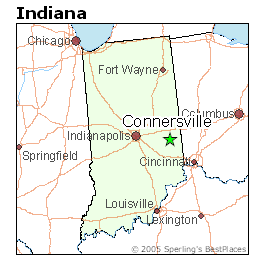 Harrisburg, Stockton, San Bernardino, Detroit and now … Connersville, Indiana. The city of 13,000 – southeast of Indianapolis – has been struggling in the wake of the 2007 closure of an auto parts plant which had employed 890 people. Due to state level restrictions on local property taxes, Connersville has limited revenue flexibility. The City’s governing board declared a financial emergency on Tuesday, March 11.
Harrisburg, Stockton, San Bernardino, Detroit and now … Connersville, Indiana. The city of 13,000 – southeast of Indianapolis – has been struggling in the wake of the 2007 closure of an auto parts plant which had employed 890 people. Due to state level restrictions on local property taxes, Connersville has limited revenue flexibility. The City’s governing board declared a financial emergency on Tuesday, March 11.
Connersville’s latest audited financials for the calendar year 2012 showed a substantial general fund deficit, but a $2.9 general fund balance – equal to 30% of annual expenditures and thus comfortably within GFOA guidelines.
According to Connersville mayor Leonard Urban, the general fund balance dropped to $2.2 million at the end of 2013 and to less than $1 million as of March 1, 2014. He projects it will be exhausted before new property tax revenues become available in June.
The 2012 financial statement shows that the city has $11.9 million in outstanding bonds. MSRB EMMA indicates that some of these were rolled over in 2013. The city’s debt appears to be unrated. Thus far, we have seen no discussion of a potential default. Connersville is planning to address the shortage of funds by cutting public safety expenditures and temporarily halting public works projects.
Smaller cities, away from major media markets, can get into fiscal trouble without the outside world noticing. In my survey of California cities last year, I found that one of the state’s most distressed municipalities was Ridgecrest – a town with 28,000 residents in the desert 150 miles north of Los Angeles. This city’s struggles – which included a sharp multi-year revenue decline and a negative general fund balance – appeared to elude major media outlets.
News of financial difficulties in smaller more remote municipalities don’t escape the radar of local media, which is part of the deep slice of the online world we monitor here at Bitvore. Our platform has already captured two print stories and video of a TV news report. Rather than waiting for the appearance of audited financial statements, monitoring local media can take your portfolio monitoring efforts to a whole new level.
